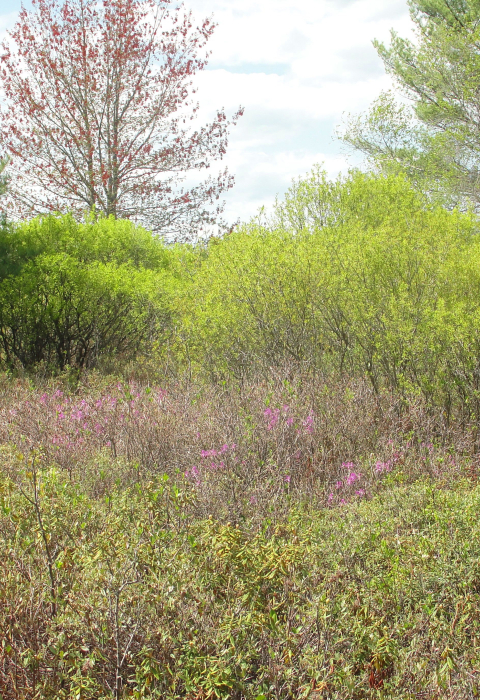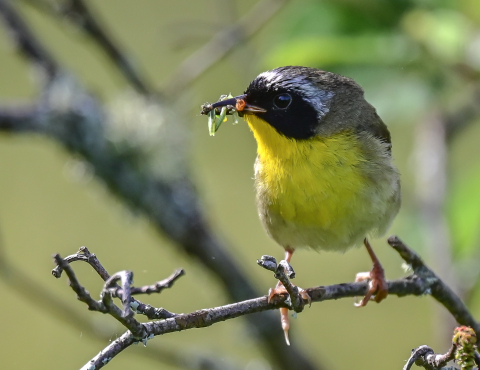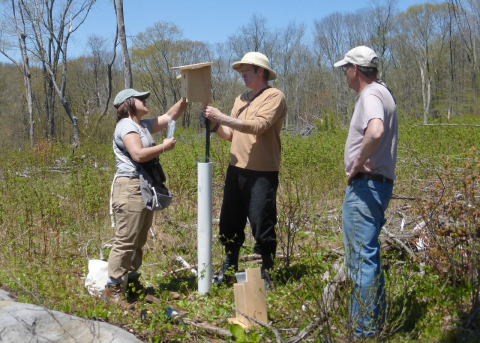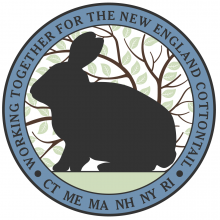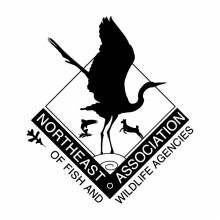Audubon Chapter Project
In 1995, an heir of Margery Boyd gave Litchfield Hills Audubon Society (LHAS) a 106-acre tract. Boyd Woods Audubon Sanctuary had meadows, thickets, vernal ponds, and woods – plenty of woods.
Margery Boyd lived on Twin Brook Farm from 1926 until 1992. An avid birder, she kept daily records of every bird she saw. Said LHAS member Debbie Martin: “Margery’s diary showed that many kinds of birds that need shrubland and young forest were common when her property was reverting from farmland to forest.”
Boosting Diversity
By the time LHAS acquired the land, it was 90 percent wooded, with most of the trees the same age. “The woods were beautiful, but very quiet,” Martin said. To add diversity, LHAS carried out a small, 5-acre clearcut timber harvest. Soon, members started hearing and seeing chestnut-sided warblers, blue-winged warblers, eastern towhees, and field sparrows.
Biologists with the Connecticut Department of Energy and Environmental Protection found fecal pellets left by eastern cottontail rabbits, which are not native to the Northeast.
Making a "Mess"
In 2012, LHAS was asked to consider creating potential habitat for native New England cottontails, which had been found nearby. Some members were reluctant. After visiting young forest habitat projects where multiple acres of timber had been harvested, “We were horrified by what we saw: treetops, logs, and huge piles of brush,” Martin said. “We didn’t want that kind of a mess on our property.”
But LHAS members began to see things differently the more they learned about the threatened New England cottontail and other wildlife that is struggling due to the disappearance of young forest and shrubland. Connecticut has identified more than 50 Species of Greatest Conservation Need that require such habitat. “On that list were many of the birds that Margery Boyd had once counted as common,” Martin said.
In 2014, LHAS clearcut another 8 acres, and in 2015, 4 more acres. Workers built three brush piles per acre. LHAS also committed to improving shrubland through periodic mowing and by controlling non-native invasive shrubs.
As we've created a mix of conifers, shrubland, and young forest habitat, we've truly become a wildlife sanctuary."
New Life on the Land
Soon it became impossible to think of the freshly cut areas as “damaged” or “devastated” by the management actions, Martin said. “When spring arrives these new habitats are full of life. Towhees and fox sparrows sing from the brush piles. Indigo buntings, field sparrows, and catbirds join the chorus. American woodcock sing and perform courtship flights over the expanded forest openings.”
Renewed sunshine encourages the growth of plants and wildflowers visited by pollinating insects. In autumn, the plants produce seeds and berries that feed wildlife. Tracks in winter’s snow show that “a variety of animals are visiting the clear cuts, with some burrowing into the brush piles,” Martin said.
In 2019, Boyd Woods began an eight-year forest management project focused on brush management (controlling and eradicating invasive shrubs) and forest stand improvement (tree thinning).
Education, and Enjoying Nature
Margery Boyd wanted her land to be used for education and the enjoyment of nature. “Today, we have a perfect opportunity to fulfill her wishes in this promising new habitat,” Martin said. “We readily admit that the ‘messy clearcuts’ that now diversify our landscape were the best thing we could have done at Boyd Woods Sanctuary.”
In April 2015, the New England Chapter of The Wildlife Society awarded Certificates of Recognition to Debbie Martin, Rich Martin, and John Baker of LHAS for their oversight and promotion of New England cottontail conservation projects.
How to Visit
Learn more about Boyd Woods Audubon Sanctuary. LHAS provides a trail map.

